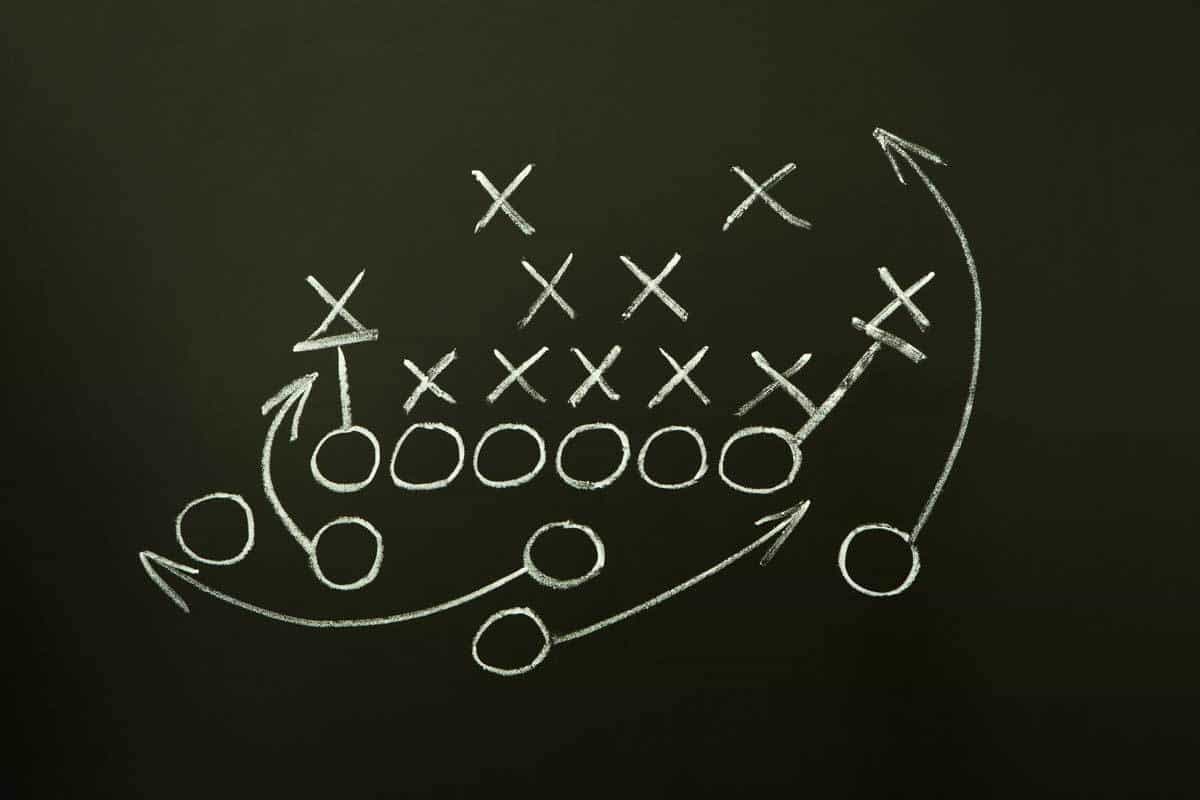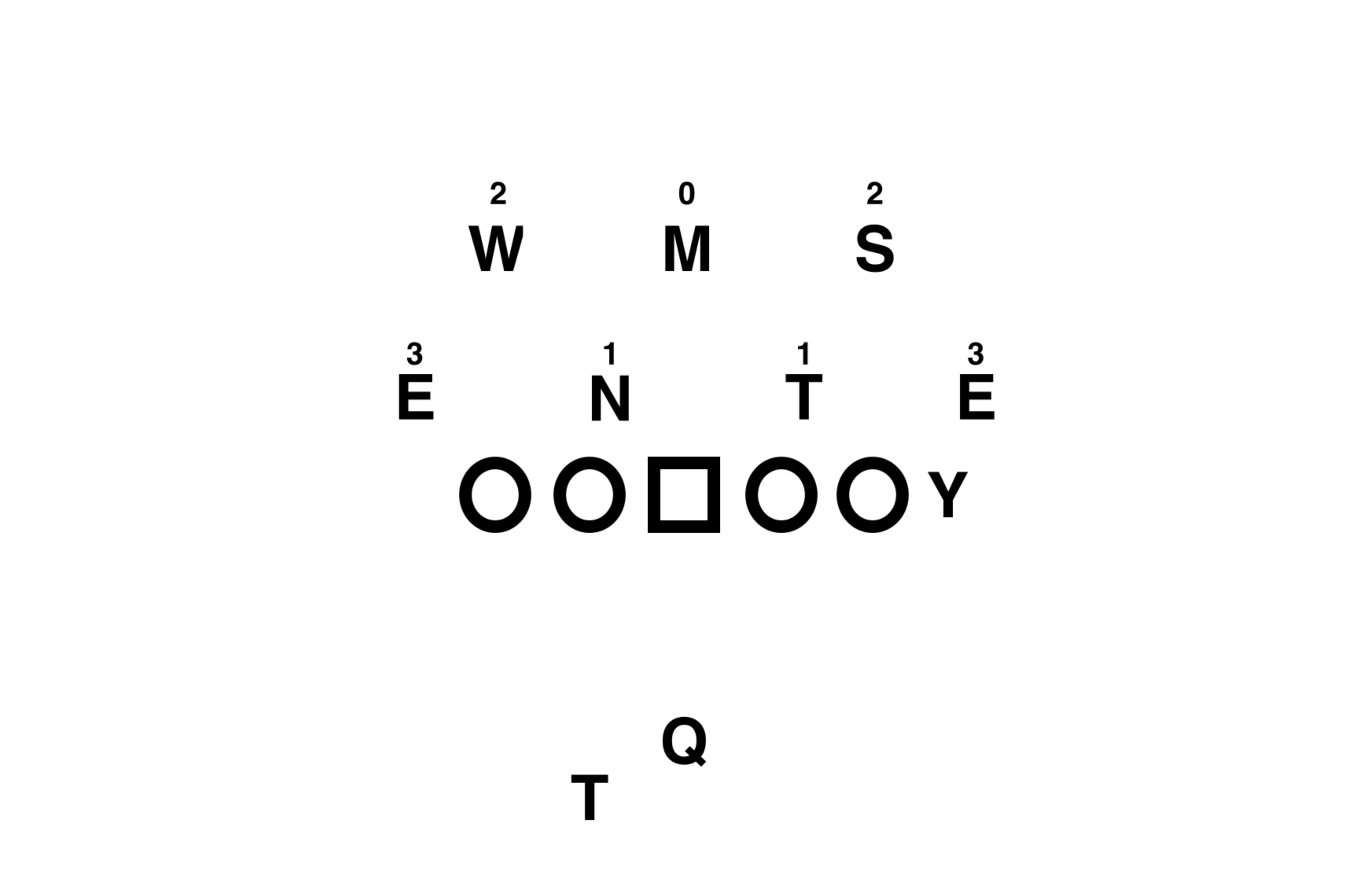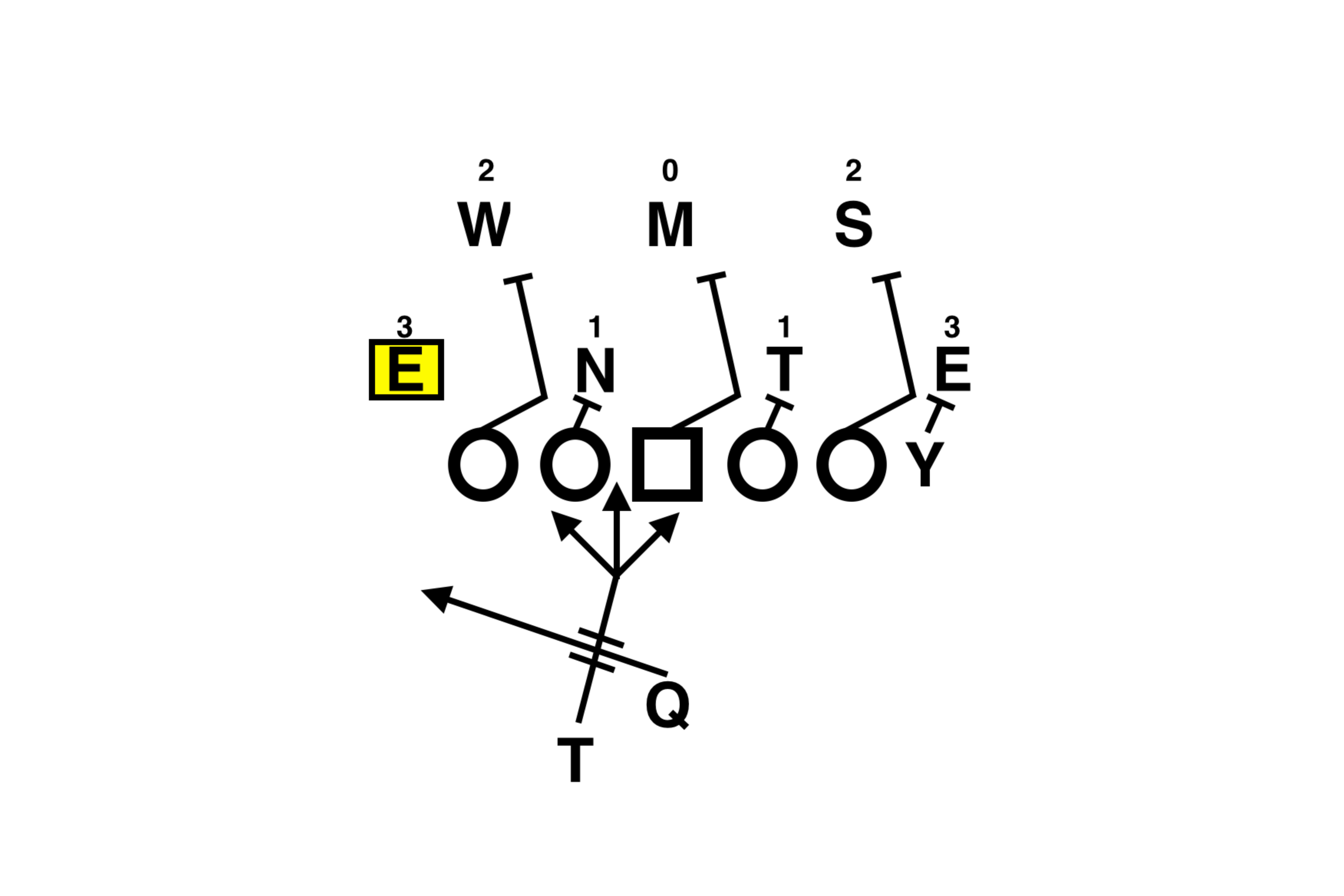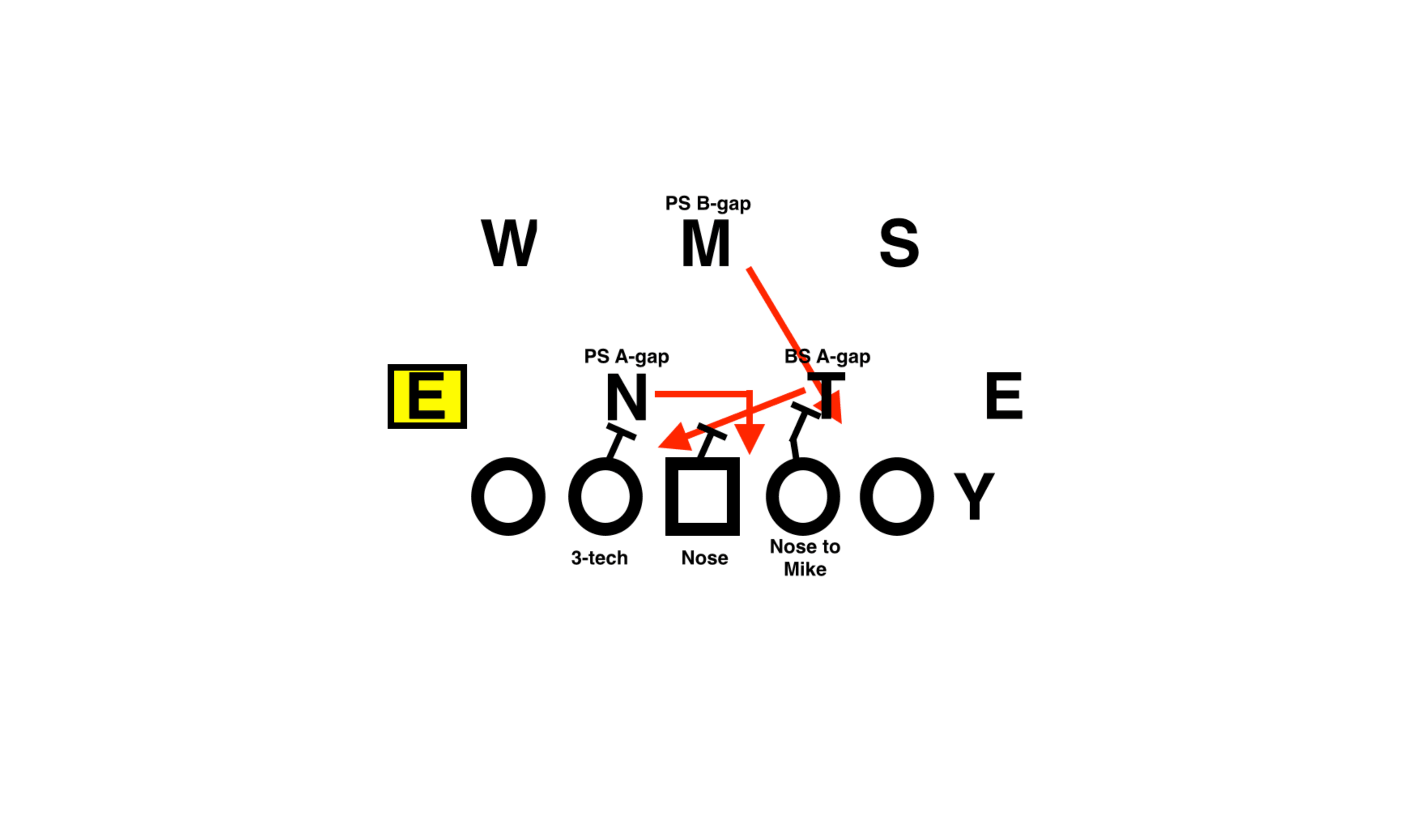One of the changes we are going to be seeing this fall with the Florida Gators offense under Kurt Roper’s offense is a move from Brent Pease’s two back power/counter schemes to a run scheme based primarily on inside and outside zone run plays with designed quarterback reads and packaged passing concepts.
From a philosophical standpoint, Power O and its complement/constraint play Counter Trey are designed to create favorable angles on the play side and put extra blockers at the point of attack that the defense hasn’t accounted for in their run fit. The downside is to get these extra blockers at the point of attack, you have to pull them from the back side of the play. This works great against less athletic fronts, but against SEC tackles and ends who can and will stunt and shoot the A or B gap and then can run down the play from the back side or drive the center or playside guard back into the pull, you’ve got problems. When you add in tackle/backer stunts, line slants, and tackle/end twists, it can be extremely tough for a lineman to diagnose, identify how to address the stunt, and still run the play as designed.
Enter the zone blocking scheme. In essence, it is characterized by two runs (inside zone and outside zone) and 3 simple rules for each lineman. It doesn’t require pulling across the formation, getting up through a hole, and engaging a more agile linebacker, doesn’t ask linemen to work alone on a matchup they can’t win, and makes dealing with stunts and games in the front seven remarkably easy.
Let’s start with inside zone. Essentially each lineman has 3 blocking priorities:
1) If you have a man on you, block him
2) If you do not have a man on you, double team to the play side and
3) Work up to the second level and block the linebacker stacked over the top when he flashes to one side or the other.
That’s it. Simple, right? In practice, there is a bit more to it, so let’s get into the mechanics of how the line communicates and identifies who is blocking who, who has help, etc.
The basic idea is it all starts with the man lined up over the center. The center identifies the guy lined up over him and numbers him 0. In an odd front (4-3), this will usually be the middle linebacker. In an even front (3-4), it will usually be the nose. The numbers progress up on either side from the center, and correspond to blocking rules. It ends up looking something like this:
This basically corresponds to which offensive lineman is responsible for which box defender in the blocking scheme. The center is responsible for 0, the guards to each side are responsible for 1, the tackles for 2, and tight ends/B-backs/fullbacks are responsible for 3, depending on the formation and personnel grouping.
Back to the rules, the first responsibility is blocking the man over you. Anyone with their blocking rule lined up on the line will make no line call and block that man. The second responsibility is to combination block the next man to the playside and then work up to the second level blocking rule. Anyone with their blocking rule lined up off the line is responsible for making a line call for a double team with the next lineman over to the play side and then working with him up to their blocking rule. It’s that simple.
Now, let’s take a look at an example:
For this front, the nose is playing a 2i technique, and the mike is heads up over the center. Thus, the Mike is blocking rule zero. The defensive tackles are both 1s, the OLBs are 2s, and the ends are 3’s. When you lay in the play, it will look something like this:
The tight end to the play side is going to block the strong side end. The strong side tackle is going to make a line call to let the tight end know he has help and combination block the end with the tight end. The pair will then take on the Sam linebacker. The guard has the 3-technique with help from the center who will also make a line call for a combination block. That pair will then work up to the Mike linebacker. The backside guard has the nose lined up over him playing a 2i technique with help from the backside tackle who will make another line call, and they will work up to the Will linebacker. Finally, the backside end will be accounted for by being read by the quarterback.
From a technique standpoint, it is a downhill run in Roper’s scheme and the linemen will be working to drive the defensive line backwards. It’s the same run Alabama has made a living off of under Nick Saban, only run from the shotgun rather than from under center. Linemen with a man on will let the defender declare their gap, fire off downhill, and drive him backwards, while linemen assisting in combination will be taking a gather step to get underneath the pad level and then also driving backwards. When the linebacker flashes to either side of the combo block, the offensive lineman on that side of the combination block will give a shove to his partner to disengage and then deliver a downhill blow to the linebacker.
As far as the back goes, he’s going to have an initial aim point of the inside hip of the center and read the combination blocks on the interior, from tackle to nose. He’ll then make one cut, either straight up the field, back towards the backside, or he’ll bounce towards the playside, and immediately get upfield.
This will probably be the play that we will see most out of our new Gator offense this year. We’ll run it from a variety of formations, both with and without a read by the quarterback, and both with and without packaged passing options or play action. It will form the base of our offense and is a quintessentially downhill power run play designed to get tough yards and beat up the defense.
When you start beating up and driving back a defense consistently, one thing they will do is try to introduce confusion through stunts and games in the front 7, changing up gap responsibilities in their run fits. With the previous power/counter scheme, the Gator offense often ran into trouble even with the most rudimentary stunts, and I have to believe that much of that was due to the run scheme itself and some inherent problems it can have with athletic defensive fronts. One particular advantage of zone run blocking schemes, however, are how they easily and intuitively deal with defensive front 7 games and stunts.
Essentially, when you are running a zone run, you’re still blocking your playside gap. When the defense runs a stunt, all they are doing is changing their gap assignments within the run game. The way zone blocking accounts for this is by letting the down linemen declare their gap before engaging. If a defender leaves the gap he is lined up over, the offensive lineman who has him as his blocking rule will immediately look for someone to replace him. For example, if an offensive lineman’s blocking rule slants hard and crosses his face, he will be let go and picked up by his partner on the combination block, while the lineman who let him go will look for:
A) a twisting lineman from the backside
B) a stunting linebacker flashing over the top
C) a slanting lineman coming from the playside
In short, the lineman will scan 180 degrees starting in the direction the slanting defensive lineman went and back to the playside, picking up whoever they see coming into their gap and driving them backwards. Here is one example with a 3-man game between the Mike linebacker, 3-technique, and Nose:
What this shows is that inside zone is not only a great downhill play, but also incredibly versatile and able to deal with today’s shifting, multiple defensive fronts. Not only will we see just as many big plays from it as the old power/counter scheme when all the blocks turned out, but we should also see fewer negative plays which will allow the Gator offense to stay on schedule and keep our playbook opened up, making defending the Gator offense a much tougher proposition.







Tom,
Great breakdown of this zone blocking scheme. I think too many fans out there, including myself, look at our backs and say, yeah we should run all over people with this new up-tempo offense. We’ve been searching for playmakers for so long now that we forget about the big guys on the line. Hopefully this simplified blocking scheme will allow our linemen to create more running lanes for KT, Jones and company, and thus helping to open up the passing game for Driskel.
I’m looking forward to see what you breakdown in your next film room piece.